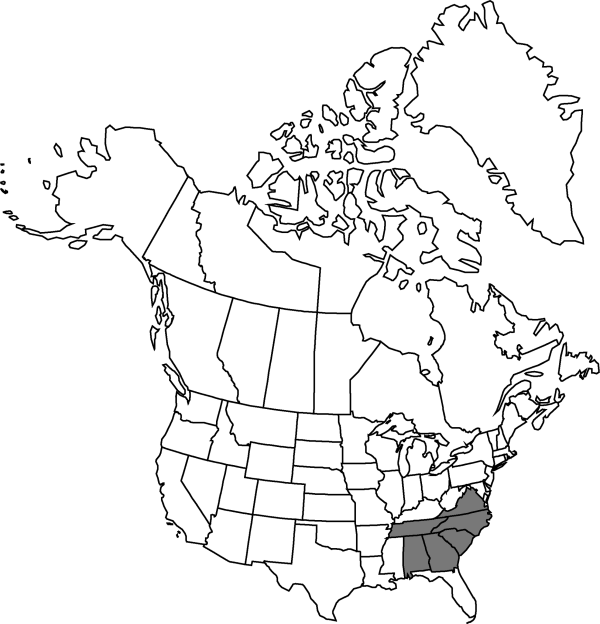Phemeranthus mengesii
Novon 11: 320. 2001.
Basionym: Talinum mengesii W. Wolf Amer. Midl. Naturalist 6: 153. 1920
Revision as of 21:37, 16 December 2019 by FNA>Volume Importer
Plants to 4 dm; roots elongate, fleshily woody. Stems ± erect, usually branching. Leaves sessile; blade terete, to 7 cm. Inflorescences cymose, much overtopping leaves; peduncle scapelike, to 20 cm. Flowers: sepals deciduous, ovate, 3–4 mm; petals pink to rose-purple, obovate, 9–15 mm; stamens (40–)50–100; stigma 1, subcapitate. Capsules subglobose, sometimes trigonous, 3–4 mm. Seeds without arcuate ridges, 0.8–1 mm. 2n = 24, 48.
Phenology: Flowering Apr–Oct.
Habitat: Woods, glades, barrens, cliffs, outcrops, rocky banks, sandstone, granite, gneiss, rarely limestone
Elevation: 100-1000 m
Distribution

Ala., Ga., N.C., S.C., Tenn., Va.
Discussion
Most populations of Phemeranthus mengesii are diploid but a few scattered in western Georgia are tetraploid, probably the result of autopolyploidy (W. H. Murdy and M. E. B. Carter 2001).
Selected References
Lower Taxa
None.